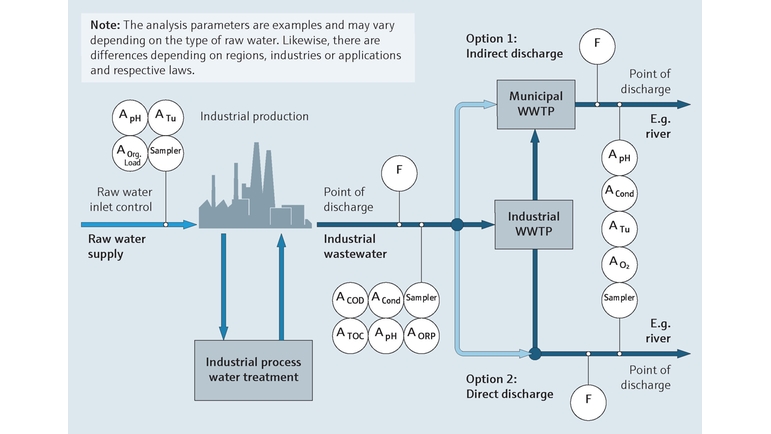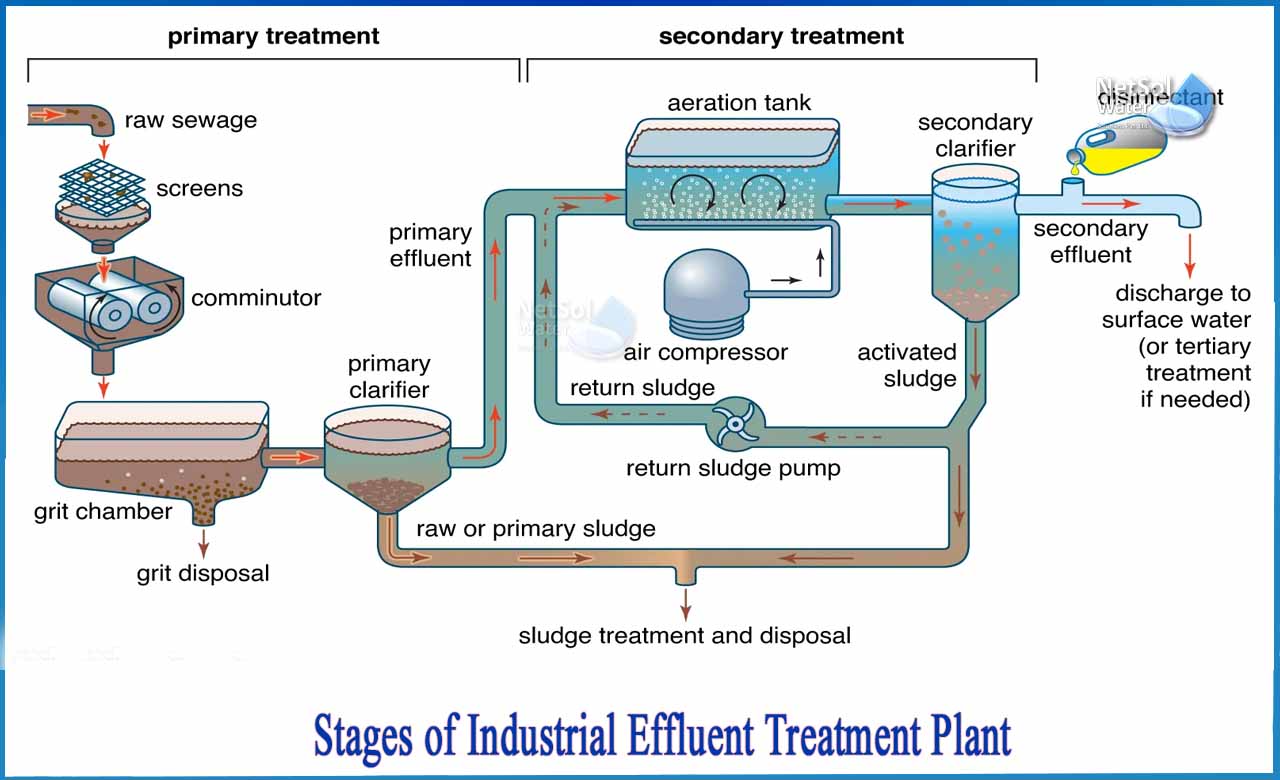Secret Methods in Industrial Waste Water Treatment Procedures
The therapy of commercial wastewater is an essential facet of ecological management, including a range of strategies developed to mitigate the influence of impurities. Innovations in technologies such as membrane layer purification and progressed oxidation processes offer cutting-edge solutions for enhancing treatment efficiency.
Physical Therapy Approaches
Just how successfully can physical therapy methods attend to the intricacies of commercial wastewater? Physical therapy approaches play an essential duty in the initial stages of wastewater monitoring, focusing largely on the elimination of solids and large particulates. Strategies such as filtering, flotation, and sedimentation are essential for reducing the focus of put on hold solids, therefore improving the performance of subsequent therapy processes.
Sedimentation includes the gravitational settling of solids, permitting for the separation of much heavier materials from the wastewater. This method is particularly efficient in making clear water prior to biological or chemical therapies. Purification, on the other hand, utilizes different media to catch particle issue, ensuring that smaller sized impurities are eliminated. This technique can be customized to suit different types of industrial effluents, generating clearer effluent streams.
Additionally, flotation protection approaches, which utilize air bubbles to lift suspended solids to the surface area for removal, work in dealing with wastewater with high focus of fats, oils, and greases. On the whole, physical treatment methods serve as a critical very first step in the thorough monitoring of commercial wastewater, guaranteeing that the lots on succeeding therapy phases is lessened and boosting overall therapy effectiveness.
Chemical Treatment Techniques
While physical therapy techniques lay the groundwork for reliable wastewater monitoring, chemical therapy techniques are crucial for dealing with the more complicated pollutants commonly discovered in industrial effluents. These methods use various chemical representatives to precipitate, reduce the effects of, or oxidize dangerous compounds, guaranteeing a more extensive elimination of pollutants.
One usual method is coagulation and flocculation, where chemical coagulants such as light weight aluminum sulfate or ferric chloride are included to advertise the aggregation of suspended particles. This procedure improves solid-liquid separation, decreasing turbidity and enhancing water top quality. Additionally, neutralization processes are used to readjust the pH of wastewater, using bases or acids to neutralize acidic or alkaline streams, specifically.
Oxidation-reduction reactions play a crucial role in degrading organic pollutants and microorganisms. Chemical oxidants like hydrogen, ozone, or chlorine peroxide are made use of to damage down intricate organic compounds, making them much less dangerous or much more naturally degradable. Progressed oxidation processes (AOPs) combine several oxidation techniques to improve toxin elimination efficiency.
Biological Therapy Processes
The performance of wastewater treatment is significantly boosted by biological treatment procedures, which harness the all-natural metabolic tasks of microbes to break down raw material and get rid of toxins. Industrial Waste Water Treatment. These procedures largely entail cardio and anaerobic digestion, each tailored for specific kinds of wastewater
Cardio therapy processes utilize oxygen to sustain microbial growth, advertising the break down of organic contaminants into carbon dioxide and water. Usual techniques include triggered sludge systems, where oygenation containers assist in the mixing of wastewater with bacteria, and dripping filters, which motivate biofilm development on media surfaces.
On the other hand, anaerobic therapy procedures happen in the absence of oxygen, utilizing anaerobic germs to disintegrate raw material, resulting in biogas manufacturing, a renewable power source. Anaerobic digesters are frequently utilized in industrial settings for this function, efficiently decreasing the quantity of sludge while generating important biogas.
The choice of a biological therapy approach depends upon wastewater features, therapy objectives, and regulative criteria. The integration of organic processes in wastewater therapy not just enhances contaminant elimination efficiency but additionally promotes sustainability by decreasing chemical use and supporting source healing.
Advanced Oxidation Processes

Usual AOP techniques include Fenton's reagent, ozonation, and photocatalysis. Fenton's reagent, a mix of hydrogen peroxide and ferrous iron, militarizes the formation of hydroxyl radicals, making it efficient for dealing with wastewater including phenolic compounds and various other recalcitrant substances. Ozonation makes use of ozone as an effective oxidant, efficient in breaking down a wide variety of natural pollutants while all at once decontaminating the effluent. Photocatalysis employs light-activated stimulants, such as titanium dioxide, to enhance oxidation reactions and remove impurities.
AOPs offer a number of advantages, consisting of decreased sludge production and the ability to treat wastewater with high concentrations of natural contaminants. The application of AOPs calls for careful factor to consider of operational parameters and cost-effectiveness, ensuring that these sophisticated strategies are properly incorporated right into existing wastewater therapy systems.
Membrane Layer Filtering Technologies

Microfiltration works for getting rid of put on hold microorganisms and solids, while ultrafiltration targets smaller natural particles and viruses. Nanofiltration bridges the void in between ultrafiltration and turn around osmosis, properly getting rid of organic substances and divalent ions. Reverse osmosis supplies the highest possible degree of filtration, used mostly for desalination and removing mono-valent ions.
Membrane innovations supply countless benefits, consisting of reduced energy consumption compared to conventional treatment techniques, modular layout for scalability, and the potential for water recuperation and reuse. Obstacles such as membrane fouling and the need for regular upkeep need to be addressed to make certain system efficiency. In general, membrane layer filtering innovations represent a vital component of modern industrial wastewater treatment methods, promoting sustainability and resource conservation in water monitoring.
Verdict
Finally, commercial wastewater treatment utilizes a varied array of methods, consisting of physical, chemical, biological, and progressed approaches. Each technique plays a vital duty visit here in efficiently attending to numerous contaminants, boosting water top quality, and promoting resource sustainability. The integration of these techniques fosters a comprehensive therapy technique, guaranteeing that commercial effluents fulfill regulative criteria while decreasing environmental effect. Proceeded improvements in these techniques will better enhance the performance and performance of wastewater treatment procedures in commercial setups.
The treatment of industrial wastewater is an essential aspect of environmental monitoring, involving an array of methods designed to mitigate the effect of pollutants.How efficiently can physical treatment methods resolve the complexities of commercial wastewater?Advanced oxidation procedures (AOPs) represent a sophisticated method in industrial wastewater treatment, developed to successfully deteriorate organic contaminants that are usually resistant to conventional a fantastic read therapy techniques (Industrial Waste Water Treatment).In conclusion, commercial wastewater therapy uses a diverse range of strategies, consisting of physical, chemical, organic, and progressed methods. Continued developments in these techniques will certainly even more enhance the efficiency and performance of wastewater therapy processes in industrial settings